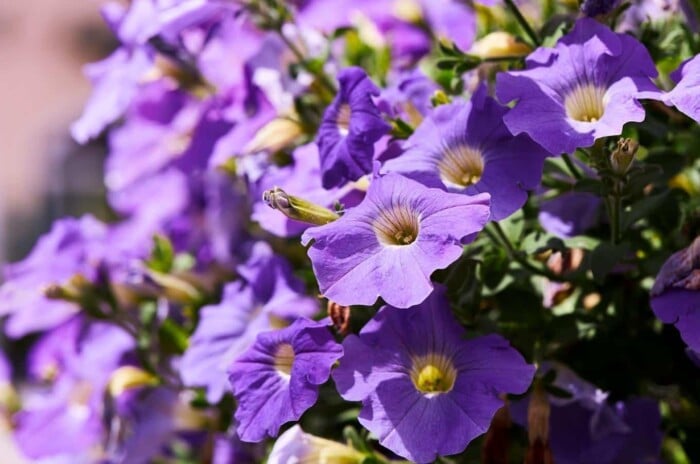Do Petunias Need Full Sun, Partial Shade, or Full Shade?
Not sure where to plant your petunias for proper sun exposure? Do these popular flowers do best in full sun, partial shade, or full shade? In this article, gardening expert Paige Foley examines the proper sunlight amounts for petunias in the garden!

Contents
Petunias are a favorite among beginner and experienced gardeners. They add bright color to flower beds, containers, or hanging baskets.
No matter what variety you choose, you must grow them in the right location to enjoy as many blooms as possible. But do these flowers require full sun, partial sun, or full shade? Let’s take a deeper look at the sunlight requirements for petunias.
The Short Answer
Petunias need at least 6 hours of sunlight per day to survive. They will produce more blooms if they recieve 8 hours or more daily. If grown in shaded areas, bloom production will be very slow, and plants will be shorter. You may barely get any blooms from plants receiving less than 5 hours of sunlight.
If your petunias must see any shade, try to make it afternoon shade. The afternoons are typically hotter and sunlight is more intense. Try to stick to at least 6 hours of sunlight, mostly in the morning, to see those beautiful flowers blossom.
The Long Answer
Finding the perfect spot for your flowers can be nuanced, but it doesn’t have to be complicated. Here are the key factors to consider:
Sunlight Requirements
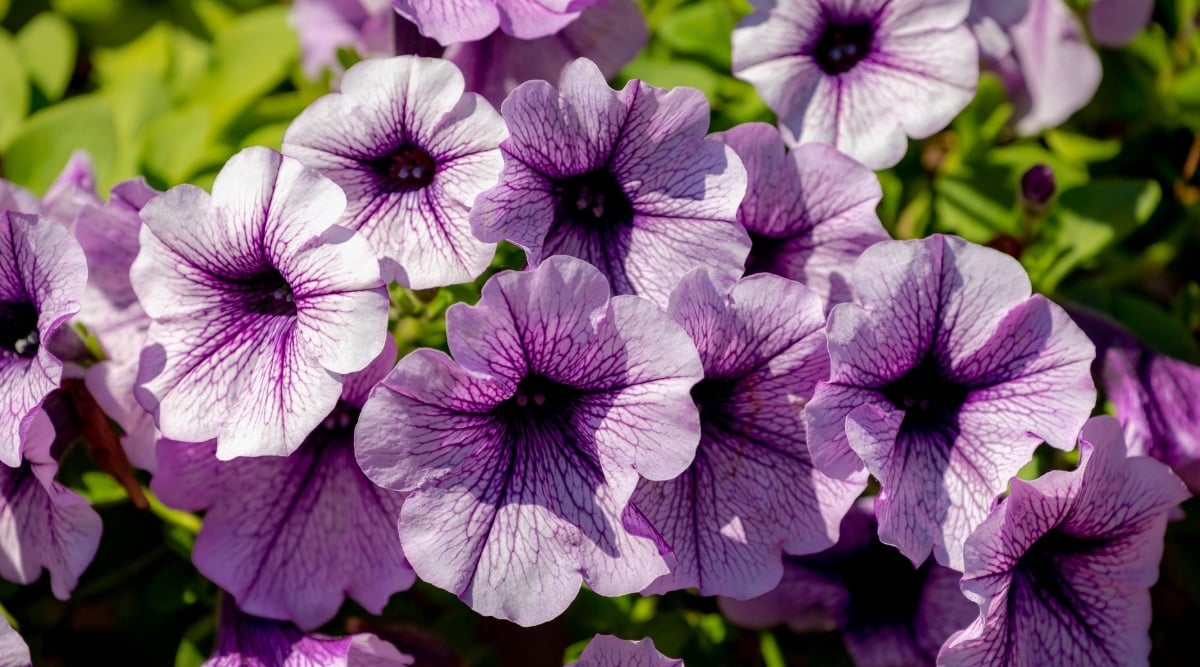
Petunias need at least 6 hours of light daily to produce beautiful plants. If you want your flowers to be at peak performance, plant them in 8+ hours of daily sunshine. The number of blooms directly correlates to the hours of sunlight they receive.
Less than 5 hours of sunlight is not great for these ornamentals. You will see a decrease in the plant’s number of flowers and how tall or long they will get. No matter what variety you choose to grow, they all worship the sun and need tons of sunlight exposure per day.
Climate
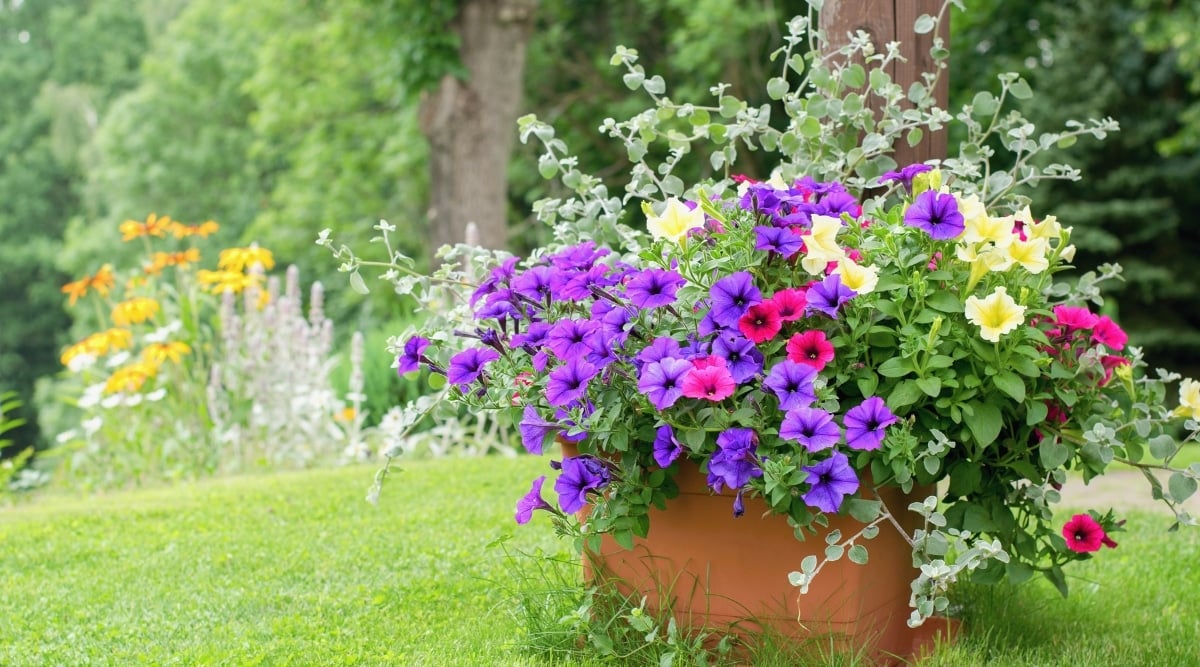
Your climate affects how a plant adapts to more or less sunlight. Petunias can be planted in hardiness zones 2 to 11. This is a large range for one genus of flowers.
A petunia in Florida can possibly see less sunlight and still thrive compared to one in Minnesota. It’s important to understand the sunlight in your region to determine if you could plant in more or less sunlight per day.
Petunias are perennials in warmer climates, such as zones 10 and 11. In these areas, they are planted in the fall and bloom continuously year-round. Unfortunately, in all other zones, petunias are annuals and only flower from planting to the first frost in the fall.
Full Sun

Petunias grown in full sunlight will produce the most beautiful and colorful flowers. Mounding varieties will stay in neat, uniform mounds that only become about 2 feet wide. Sunlight will affect how large your plants can grow and how many flowers they produce.
Cascading varieties will grow to incredible lengths in direct sun. Some varieties have been known to cover up to 10 square feet when planted in ideal conditions. Remember that all conditions, such as soil, sunlight, and water requirements, must be ideal for maximum growth.
Partial Shade
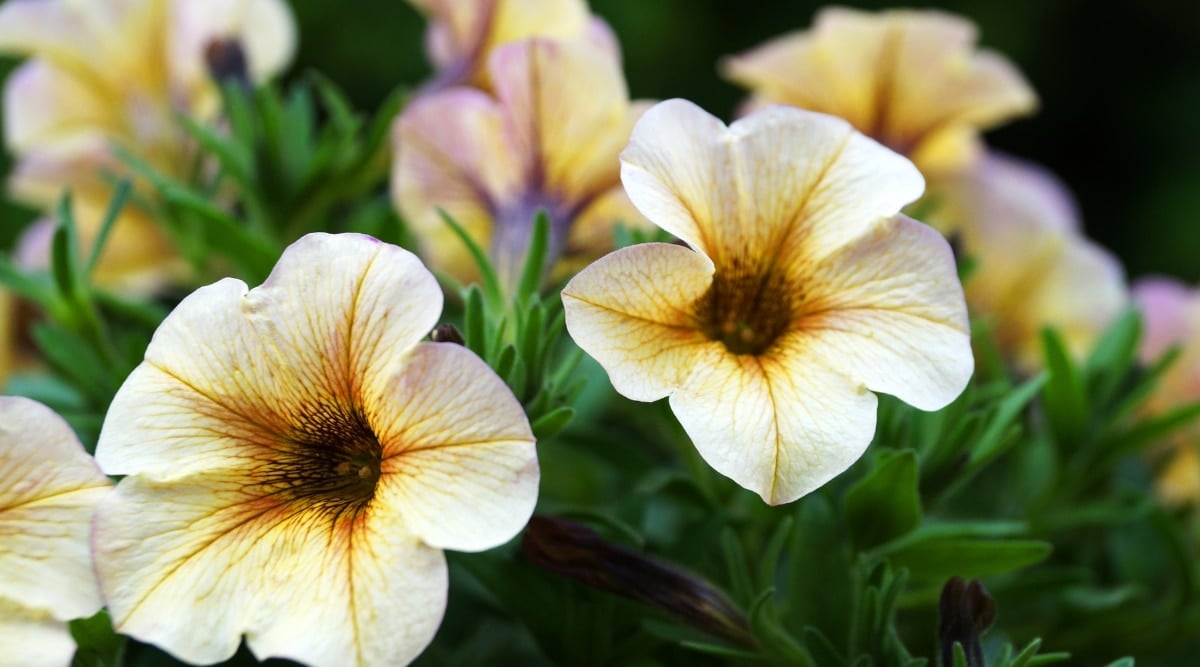
Partial shade isn’t preferred, but petunias will still grow in partial shade. However, they will not produce as many blooms, and plants may sometimes become spindly. When choosing a partially shaded location, consider a place that receives morning sun or dappled light throughout the day.
If the leaves and stems appear spindly or weak, consider pruning. Pruning will encourage new growth and promote more blooms. It is recommended to prune whether you plant in full sun or partial shade, but it’s extra helpful for leggy partially-shaded plants.
Shade
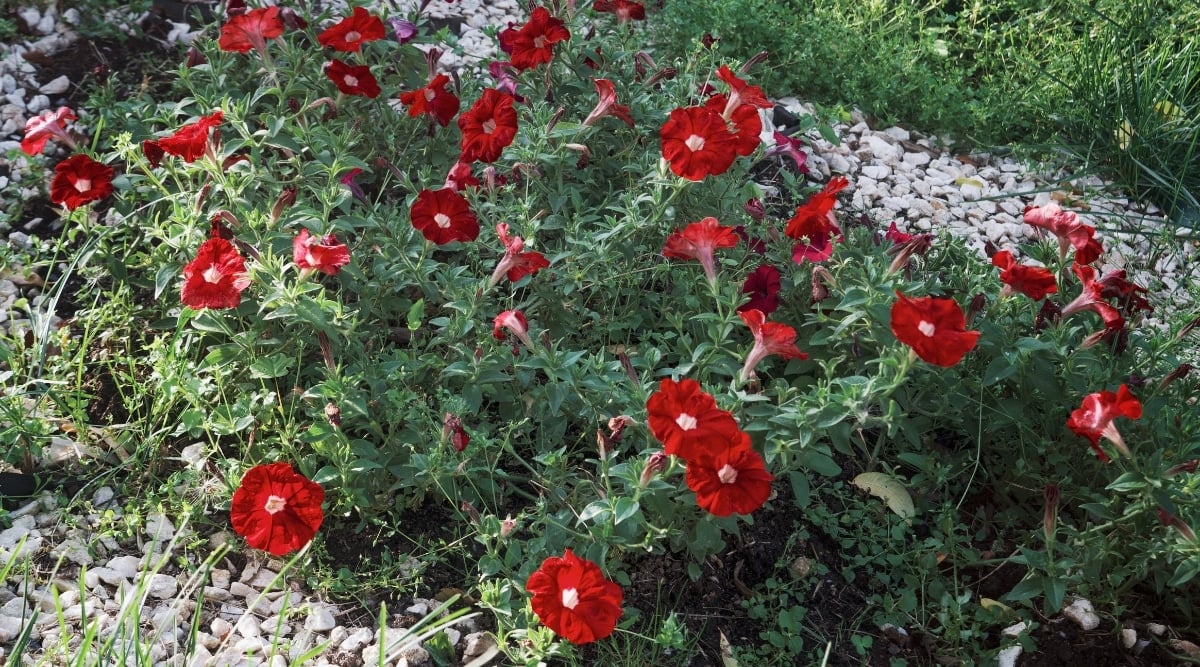
Petunias will struggle if they are grown in full shade. If you want abundant flowers, you must plant in an area with full sun. In subtropical regions, partial shade is suitable.
Focus on areas that receive 6 hours of direct sun per day to have thriving petunias. If planted in full shade, plants will become thin and weak. In time, the plant will most likely die even if provided enough water and fertilizer.
Choosing the Right Location
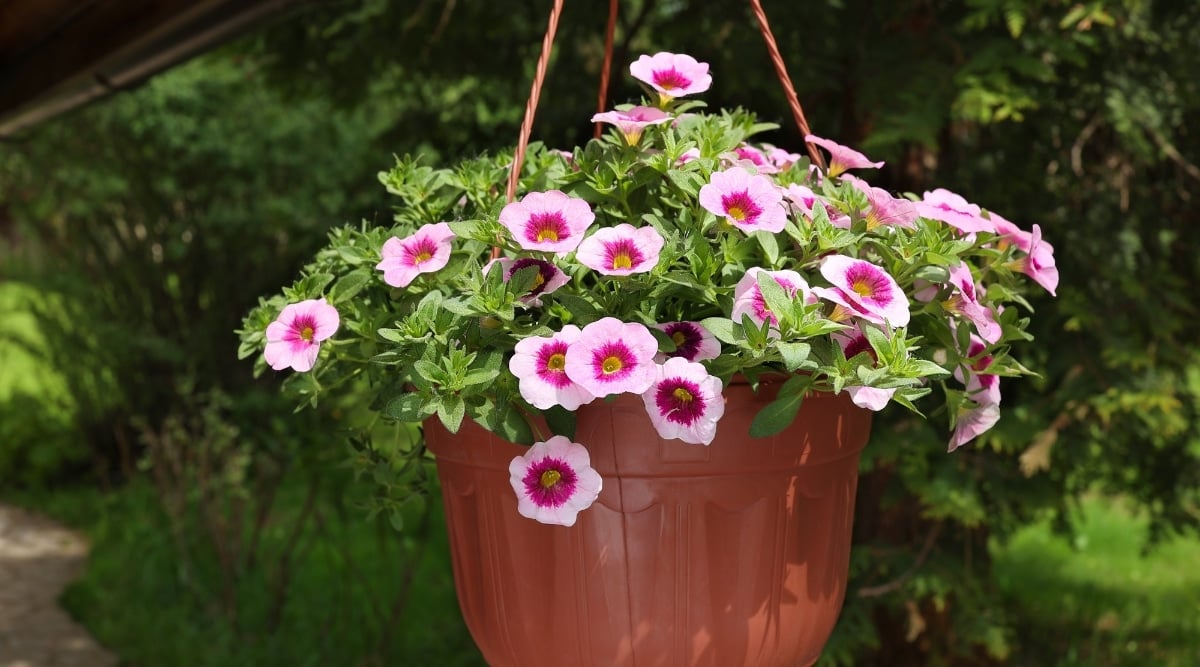
Petunias can be adapted to many locations, such as flower beds, vegetable gardens, containers, and hanging baskets. Assess your area before planting for maximum success.
Evaluate how much sun each part of the area receives. If you have a location in mind, pay attention to how the sunshine hits the area. But keep in mind as the season changes, so will the sun’s angle.
Trees, buildings, and other plants that once never shaded your plants can soon cast a shadow on them in late summer to early fall. Keep this in mind when you choose a location. Plants that once were full of blooms in early summer can produce few blooms and become leggy in the fall because of changing shade.
What Happens If My Petunias Don’t Get Enough Sun?
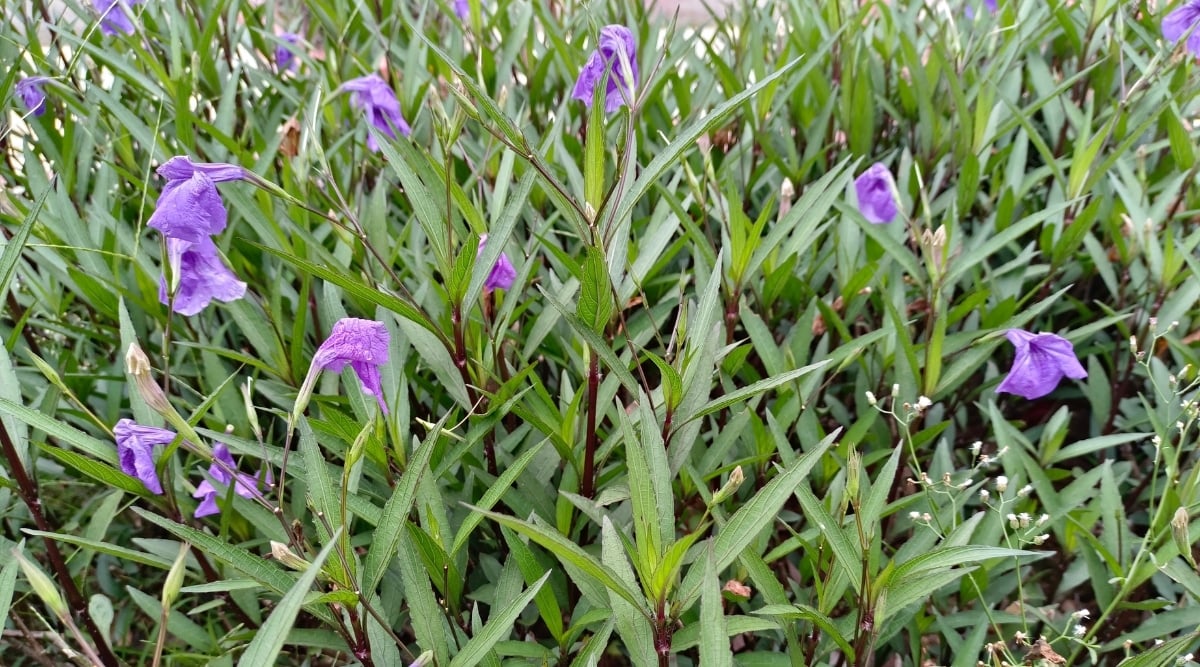
Petunias are known for their colorful blooms that last all season, but if they are not planted in the right sunlight, blooms will be reduced or absent. When they don’t get enough light, you risk killing them.
The stems will become spindly and weak and eventually die from the lack of photosynthesis. The plant will show symptoms of yellowing to brown leaves and wilting flowers if planted in too much shade. Lack of light can also cause disease to arise.
Common diseases found on shaded plants include powdery mildew and root rot. Shade is typically cooler; water may sit on the leaves and plants as it doesn’t evaporate as readily in shaded conditions. This may create the ideal conditions for fungal or bacterial diseases.
Frequently Asked Questions
Why Aren’t My Petunias Blooming?
The first item to check is how much sunlight are your petunias getting. Sunlight is correlated to bloom production. If you want to see more bloom, plant your petunias in full sun. Partial shade or full shade will hinder flower production and possibly kill the plant.
Should I Prune My Petunias?
Yes, petunias benefit from a regular pruning. The plant will look cleaner and produce more flowers from pruning. Pruning is a good idea if your petunias are planted in partial shade. Petunias in partial shade tend to become leggy and spindly quicker.
How Big Do Petunias Get?
This is depending on the environment they are grown in. Providing the right sunlight, water and soils will determine how big they will get. Most varieties only get about 12 inches tall. Cascading varieties can spread 5 feet or more.
Final Thoughts
Petunias are great for flower beds, landscapes, vegetable gardens, and containers. Remember to plant them in at least 6 hours of direct sunlight daily to enjoy those colorful blooms from spring to fall. If you want the most blooms and lush, full plants, plant them where they receive 8+ hours of sun daily. Good luck and happy growth!


